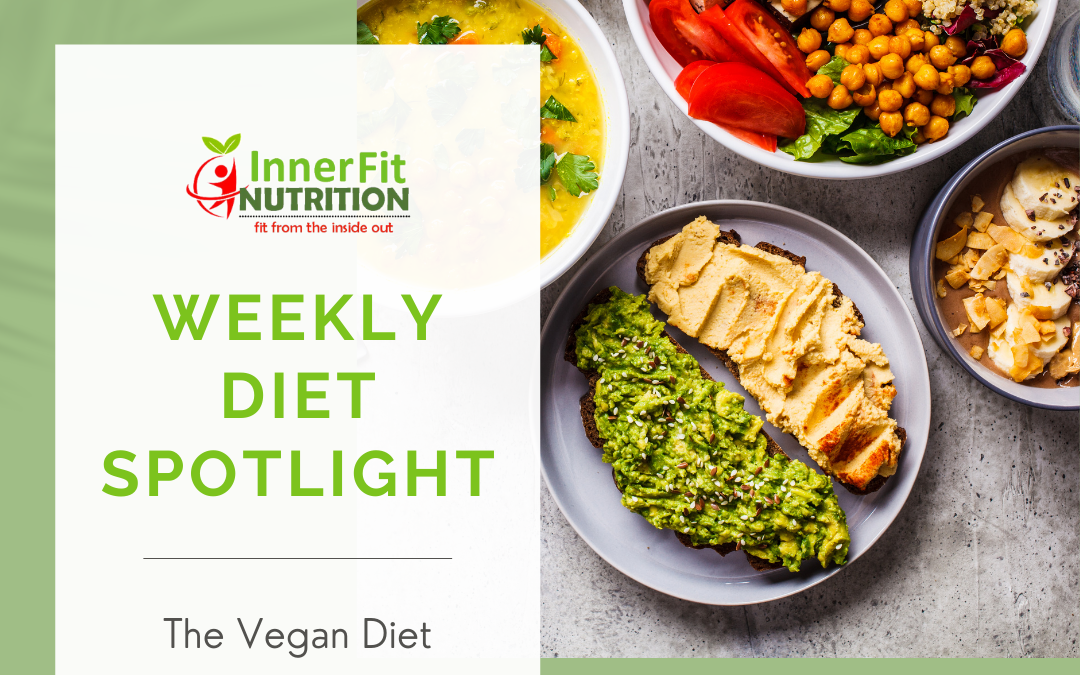Veganism has become increasingly popular due to ethical, environmental or health reasons.
A lot of vegans will criticise that veganism is a lifestyle, not simply a diet. Today we will not be looking at every aspect of veganism – simply just the dietary aspects of it.
So without further ado, let’s take a look…
What is the Vegan Diet?
A vegan diet is essentially a stricter version of a vegetarian diet. Instead of restricting just meat, vegans also eliminate dairy, eggs, honey, and any other animal products. If done well, this diet has been associated with lowering the risk of heart disease, high blood pressure, high cholesterol, and type 2 diabetes (1).
The main factor you need to take into consideration with the vegan diet (and, well, most diets) is that if you are eliminating any main food groups from your diet, you need to replace them to ensure that you aren’t missing out on any essential nutrients.
For example, if you are removing red meat, which is a major source of iron, zinc, Vitamin B12 & protein, then you need to ensure that you are replacing it with plant-based iron alternatives such as legumes and tofu. Similarly, if you are cutting out dairy which is generally our main source of calcium, then you need to replace it with fortified plant-based milks and other calcium sources.
Which Nutrients Should you be Aware Of?
The main nutrients of concern and examples of vegan food replacements are listed below. It is important to ensure that you are getting appropriate amounts of each nutrient to ensure that you are thriving on a vegan diet.
- Iron (mainly found in red meat): Legumes (i.e., beans, chickpeas and lentils), wholemeal bread and flour, breakfast cereals fortified with iron, broccoli, nuts (especially cashews), quinoa and dried fruits such as apricots, prunes and figs.
- Vitamin B12 (only found in animal sources such as meat, eggs, fish and dairy products therefore it is essential to ensure you are consuming enough of this vitamin): Breakfast cereals or plant-based milks fortified with vitamin B12 or alternatively a good quality vitamin B12 supplement.
- Calcium (main source for non-vegans is dairy products): Plant-based milks fortified with calcium, green leafy vegetables (more specifically – broccoli, cabbage, spinach and okra), calcium-set tofu, tahini or sesame seeds, legumes (i.e., chickpeas and lentils) and some dried fruits such as raisins, prunes, figs and dried apricots.
- Omega-3 (found in fish/seafood): Chia seeds, walnuts, hemp seeds, edamame, flaxseeds, seaweed and algae.
- Protein (found in an abundance of animal-based products including meat, fish/seafood, eggs and dairy products): Tofu, tempeh, legumes (i.e., beans, chickpeas and lentils), some high-protein plant-based milks, edamame and vegan protein powders. There are also vegan marine omega-3 supplements available.
- Zinc (mainly found in seafood, meat and dairy): Wholegrains, tofu, tempeh, legumes (i.e., beans, chickpeas and lentils), nuts and seeds.
Nutritional Considerations
So, simply eating more of the above nutrients will ensure that we are fuelling our bodies adequately, right?
Unfortunately, it isn’t that simple.
When looking at nutrients coming from plant-based sources, one of the biggest factors we need to look at is bioavailability. Bioavailability is the amount of the nutrient that can be absorbed and utilised by our body.
Bioavailability is affected by the chemical form of nutrient in food as well as any anti-nutrients present. A significant example of this is iron, where the meat based heme iron gets readily absorbed into our body whilst a mere 1-15% of the plant-based non-heme iron is absorbed into our body (2). In addition to this, many of our non-heme sources of iron contain anti-nutrients such as the phytates from legumes, nuts and spinach which block the absorption of iron.
Practical ways to Increase Bioavailability
So, how can we get the most out of our plant-based nutrients? Here are some tips to increase the bioavailability and decrease the anti-nutrients present in our food.
1. Combine Vitamin C Rich Foods with your Non-Heme Iron.
The combination of Vitamin C with Iron will actually increase the absorption of your non-heme (and heme) iron! Try your fave iron sources such as lentils, spinach, oatmeal or dark choc with vitamin C such as tomato, capsicum, orange, kiwi fruit or strawberries to create a match made in heaven!
2. Avoid drinking Coffee and Black Tea with Meals.
I know a coffee with your breaky is very tempting, but it can actually block the absorption of our essential nutrients. Try consuming your tea or coffee either an hour before or after meals to ensure you are getting the most out of your meals.
3. Soak your Grains, Legumes, Nuts and Seeds.
Grains, legumes, nuts and seeds naturally contain phytic acid/phytates which inhibits enzymatic digestion and binds with minerals such as calcium, iron, magnesium and zinc which renders them unavailable for our digestion. Soaking these foods may help reduce the phytate content and thus ensure the nutrients are easier digestible.
So, Should you Try the Vegan Diet?
With careful and strategic planning, vegan diets can be healthy, sustainable and cover all nutrient bases. However, as we have spoken about, there are a few extra things to consider when looking at adopting a vegan diet.
Any nutrition professional will agree that adding more plant-based foods to your diet is the best thing for your health and the planet. However, including animal-based products in addition to this allows you to easily obtain all your nutrient needs. If you are looking at implementing a 100% vegan diet, we would highly booking in an Initial Nutrition Consultation to ensure that you are meeting all your nutrients needs. In addition to this, Amanda can teach you which foods in particular to replace to ensure that you are meeting your needs from a nutritional point of view.
Written by:
Mollie Caughey-Wade,
Clinical Nutritionist (BSc).

